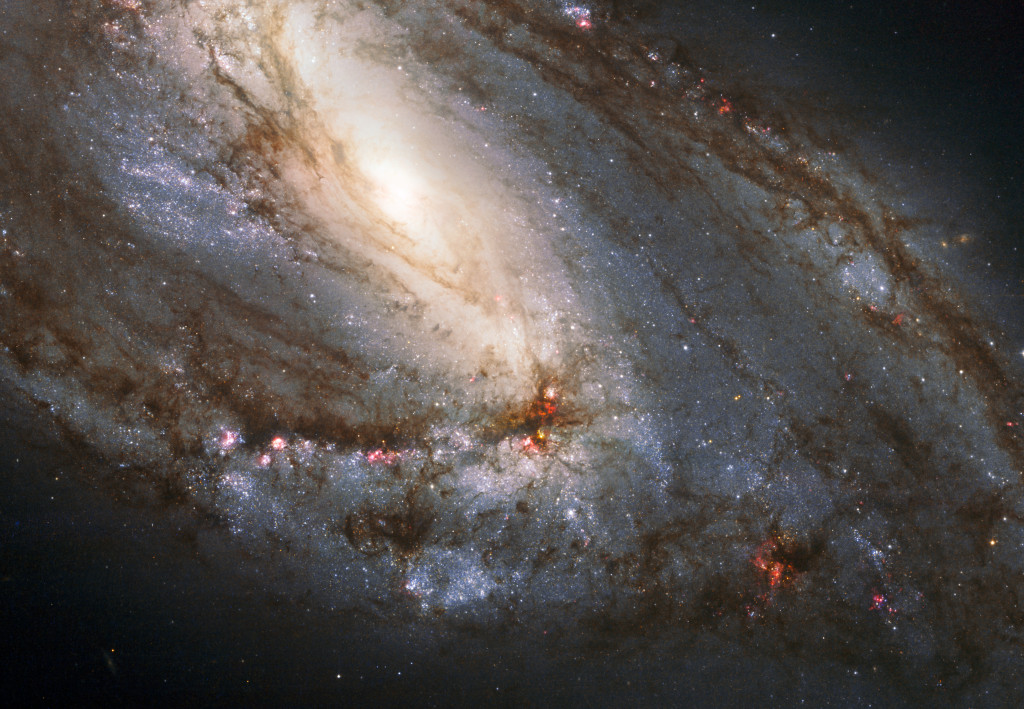
Big, beautiful spiral galaxy Messier 66 lies a mere 35 million light-years away. The gorgeous island universe is about 100 thousand light-years across, similar in size to the Milky Way. This Hubble Space Telescope close-up view spans a region about 30,000 light-years wide around the galactic core. It shows the galaxy's disk dramatically inclined to our line-of-sight. Surrounding its bright core, the likely home of a supermassive black hole, obscuring dust lanes and young, blue star clusters sweep along spiral arms dotted with the tell-tale glow of pinkish star forming regions. Messier 66, also known as NGC 3627, is the brightest of the three galaxies in the gravitationally interacting Leo Triplet.
from NASA https://ift.tt/Sp7RNj6
Comments
Post a Comment